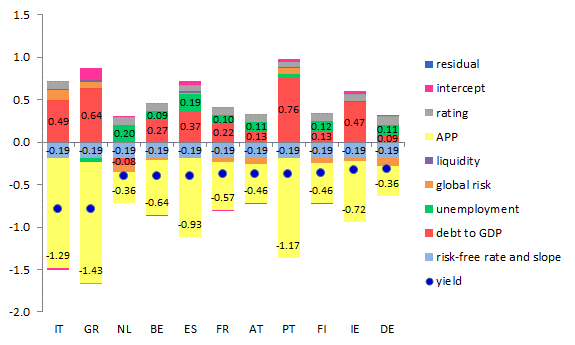References
Bernoth, K. and B. Erdogan (2012). “Sovereign bond yield spreads: A time-varying coefficient approach”, Journal of International Money and Finance, 31, pp. 639-656.
Corradin, S., Grimm, N. and B. Schwaab (2021). “Euro area sovereign bond risk premia during the Covid-19 pandemic”, ECB Working Paper Series, no 2561.
D’Agostino, A. and M. Ehrmann (2014). “The pricing of G7 sovereign bond spreads – The times, they are a-changin”, Journal of Banking and Finance, 47, pp. 155-176.
Fendel, R. and F. Neugebauer (2020). “Country-specific euro area government bond yield reactions to ECB’s non-standard monetary policy announcements”, German Economic Review, 21(4), pp. 417-474.
Georgoutsos, D. A. and P. M. Migiakis (2018). “Risk perceptions and fundamental effects on sovereign spreads”, Bank of Greece Working Paper no. 250.
Malliaropulos, D. and P. M. Migiakis (2018), “Quantitative easing and sovereign bond yields: a global perspective”, Bank of Greece Working Paper no. 253.
Monteiro, M. and B. Vasicek (2019). “A retrospective look at sovereign bond dynamics in the euro area”, Quarterly Report on the Euro Area, vol. 17, no.4, Institutional Paper no.100, March.
Paniagua, J., Sapena, J. and C. Tamarit (2017). “Sovereign debt spreads in EMU: The time-varying role of fundamentals and market distrust”, Journal of Financial Stability, 33, pp. 187-206.





